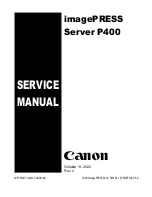
Upgrading Your Server 9-21
RAID Controller Considerations
Note the following on the configuration of a RAID System by using the on-board or optional RAID
Controller (Disk Array Controller).
To change the RAID System configuration or the RAID, the hard disk drives must be
initialized. If important data is saved in the hard disk drives used to constitute a RAID
System, first back up the data in other hard disk drives before installing boards and
configuring the RAID System.
More than one hard disk drive is required to configure a RAID System.
Hard disk drives used in the RAID System configuration should have the same disk
revolution rate and capacity in packs.
See the table on the next page for the slot in which an optional board can be installed.
Up to three RAID Controllers can be installed in the server.
Several RAID (Redundant Arrays of Inexpensive [Independent] Disks) levels can be set
for the RAID System configuration in the server. See "RAID System Configuration"
described later for available RAIDs, data transfer rate, and array configuration
For optional RAID Controller (Disk Array Controller), refer to the documentation coming
with the RAID Controller for details.
The available capacity of the hard disk drives in the RAID System configuration is lower
than the total capacity of the hard disk drives configuring the RAID System while the disk
reliability is improved (for RAID 1, 5, 6, 10, or 50).
Set "Option ROM Scan," a parameter of the slot in which a hard disk drive is installed, to
"Disabled" in "PCI Configuration" on the Advanced menu of the BIOS utility SETUP.
(The "Enabled" is factory-set.) If two or more RAID Controllers are installed, set only the
slot containing the board to boot-up to "Enabled". Do not set "Option ROM Scan" for
Onboard SAS to "Disabled".
In RAID System configuration, the total physical capacity of hard disk drives contained in
Disk Array or Logical Drive must not exceed 2TB (terra bytes).
Linux cannot be installed in a Logical Drive having capacity of 1TB or larger.
Replacement of optional RAID Controller (Disk Array Controller)
Back up the RAID System configuration information in the RAID Controller to the floppy
disk and restore it to the replaced RAID Controller. Refer to the manual that comes with
the RAID Controller for details.
When more than one RAID Controllers are installed in the server, install the RAID
Controller to which the system disk is connected in the PCI slot having the highest boot
priority.
Boot priority: Onboard SAS RAID
→
PCI #7
→
Onboard LAN #1/#2
→
Onboard LAN
#3/#4
→
PCI #6
→
PCI #5
→
PCI #4
→
PCI #3
→
PCI #2
→
PCI #1
For configuration information of Onboard RAID Controller (MegaRAID ROMB), you
can use Tools menu in NEC EXPRESSBUILDER to store or restore the information
in/from the floppy disk.
Summary of Contents for Express5800/R140a-4
Page 7: ......
Page 8: ......
Page 9: ......
Page 186: ...4 88 Configuring Your Server 3 Setting menu for VD 0 is displayed ...
Page 194: ...4 96 Configuring Your Server This page is intentionally left blank ...
Page 238: ...5 44 Installing the Operating System with Express Setup This page is intentionally left blank ...
Page 260: ...6 22 Installing and Using Utilities This page is intentionally left blank ...
Page 278: ...7 18 Maintenance This page is intentionally left blank ...
Page 352: ...8 74 Troubleshooting This page is intentionally left blank ...
Page 430: ...C 4 This page is intentionally left blank ...
Page 457: ...Installing Windows Server 2008 D 27 4 Activate Windows The Windows activation is complete ...















































